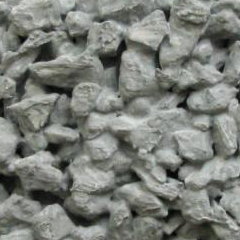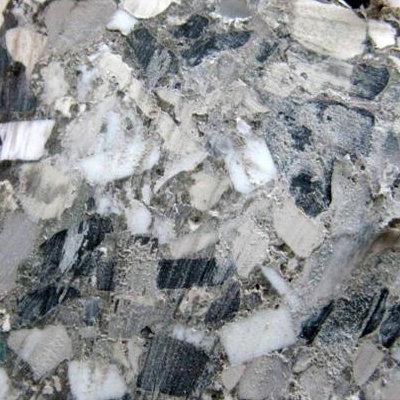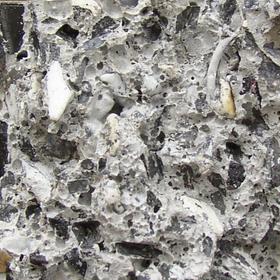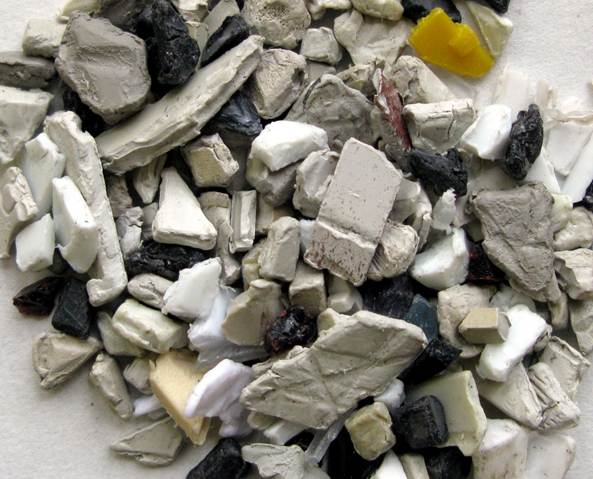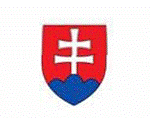Správy:
1) KRIŽMA, M. – NURNBERGEROVÁ, T.:
Selected Results of the Experimental Research Performed at the ICASA SAS in Bratislava. In: Sborník recenzovaných příspěvkú mezinárodní konference: „Zkoušení a jakost ve stavebnictví ´09“, 6. - 7. 10. 2009, FSv VUT v Brně, editor: V. Heřmánková, O. Anton, ss. 331 – 345, ISBN 978-80-214-3951-1.
Selected Results of the Experimental Research Performed at the ICASA SAS in Bratislava. In: Sborník recenzovaných příspěvkú mezinárodní konference: „Zkoušení a jakost ve stavebnictví ´09“, 6. - 7. 10. 2009, FSv VUT v Brně, editor: V. Heřmánková, O. Anton, ss. 331 – 345, ISBN 978-80-214-3951-1.
-
Anotace:
Prezentácia vybraných výsledkov experimentálno – teoretického výskumu, ktoré boli dosiahnuté na ÚSTARCH SAV za obdobie ostatných troch rokov. Pozornosť sa sústreďuje na výsledky materiálového výskumu a tiež na problematiku návrhu a verifikácie konštrukčných stavebných prvkov, ktoré boli dosiahnuté na oddelení konštrukcií. V príspevku sú uvedené tri problematiky – realizácia biomasy v stavebných kompozitoch, vplyv reologických vlastností na návrh stropných konštrukcií zhotovených z cementových kompozitov s obsahom plastovej drviny, optimalizácia návrhu voľných oceľových zámkov prefabrikovaných diaľničných betónových zvodidiel
Annotation:
Selected results of the experimental – theoretical research achieved at the ICASA SAS during recent three years are presented. There are mainly material research and problems of the design and verification of the structural building elements carried out at the department of structures.In the paper three issues are mentioned – the application of biomass in the building composites,the effect of rheological properties on the design of the ceiling structures made of cement composites containing plastic crushed material, the optimization of the design of the free steel locks of the precast motorway concrete crash barriers.
Klíčová slova: Stavebné kompozity s obsahom biomasy, cementové kompozity s obsahom PC plastovej drviny, oceľové zámky dialničných zvodidiel.
Keywords:
Building composites containing biomass, cement composites containing plastic crushed material (PC), steel locks of the motorway crash barriers.
2) KRIŽMA, M. – NURNBERGEROVÁ, T.:
Design of Reinforced Concrete Floor Slabs with the Content of the Plastic Aggregates. In: Proceedings of the 7th International Conference on „New Trends in Statics and Dynamics of Buildings“, October 22-23, 2009, Bratislava, Slovakia, FCE STU Bratislava, Slovak Society of Mechanics SAS. Editors: N. Jendželovský, A. Grmanová, pp. 47 – 50 (Proceedings of abstracts), ISBN 978-80-227-3170-6, Conference Proceedings – CD.
Design of Reinforced Concrete Floor Slabs with the Content of the Plastic Aggregates. In: Proceedings of the 7th International Conference on „New Trends in Statics and Dynamics of Buildings“, October 22-23, 2009, Bratislava, Slovakia, FCE STU Bratislava, Slovak Society of Mechanics SAS. Editors: N. Jendželovský, A. Grmanová, pp. 47 – 50 (Proceedings of abstracts), ISBN 978-80-227-3170-6, Conference Proceedings – CD.
-
Abstract:
The rational disposal of the physically over worn, inadequate components of the computer and information technique – plastics in this case – becomes concern of the whole society. The research results since the year 2004 suggest a possibility of the considered application of these plastics as partial substitute aggregates in the cement composites. The paper presents design and working characteristics of the composite mixtures containing plastic aggregates of PC and TV cases and of the interior components – printed circuits. The paper deals with
the design optimisation of the floor slabs of the cement composites containing the plastic crushed material. The relevant input values are essential – particularly specific rheological properties in comparison with the standard cement composites. The results of the free shrinkage and those of the restrained shrinkage are given. The symmetrically reinforced floor slabs were tested under short term load as well as the sandwich slabs with the
asymmetric reinforcement. The complete results for both types of slabs are presented in this paper.
3) KRIŽMA, M. – JERGA, J.:
The Use of Plastic Crushed Material from Electronic Waste in Structural Cement Composites. In: Extended proceedings CESB10 Prague conference „Central Europe towards Sustainable Building“, Prague 30.6. – 2.7. 2010, FCE CTU in Prague, editors: P. Hájek, J. Tywoniak, A. Lupíšek, J. Rúžička, K. Sojková. CD-122, ISBN 978-80-247-3633-1.
The Use of Plastic Crushed Material from Electronic Waste in Structural Cement Composites. In: Extended proceedings CESB10 Prague conference „Central Europe towards Sustainable Building“, Prague 30.6. – 2.7. 2010, FCE CTU in Prague, editors: P. Hájek, J. Tywoniak, A. Lupíšek, J. Rúžička, K. Sojková. CD-122, ISBN 978-80-247-3633-1.
-
Summary:
The paper presents design and working characteristics of the composite mixtures containing plastic aggregates of PC and TV cases and of the interior components – printed circuits. The design optimisation of the floor slabs of the cement composites containing the plastic crushed material is dealt with. The essential input values are the specific rheological properties in comparison with the standard cement composites. The results of the free and restrained shrinkage are given. The symmetrically reinforced floor slabs were tested under short term load as well as the sandwich slabs with the asymmetric reinforcement. The complete results for both types of slabs are presented in this paper.
Keywords:
electronic waste, plastic aggregates, cement composites
4) JERGA, J. - KRIŽMA, M. – NURNBERGEROVÁ, T.:
Waste Materials in Concrete – Acceptable Deterioration or Improvement. In: Extended proceedings CESB10 Prague conference „Central Europe towards Sustainable Building“, Prague 30.6. – 2.7. 2010, FCE CTU in Prague, editors: P. Hájek, J. Tywoniak, A. Lupíšek, J. Rúžička, K. Sojková. CD-123, ISBN 978-80-247-3633-1.
Waste Materials in Concrete – Acceptable Deterioration or Improvement. In: Extended proceedings CESB10 Prague conference „Central Europe towards Sustainable Building“, Prague 30.6. – 2.7. 2010, FCE CTU in Prague, editors: P. Hájek, J. Tywoniak, A. Lupíšek, J. Rúžička, K. Sojková. CD-123, ISBN 978-80-247-3633-1.
-
Summary:
Systematic search is performed in the last years on the topic of mineral aggregate replacement in concrete by waste products. Polystyrene beads from waste packing, so as particles from tire rubber belong to the most used, recently also the electrical and electronic equipment waste. By the analysis of requirement for structural application it is shown, that a deliberate addition of waste could proper modify the mechanical and physical properties of concrete. So the replacement of mineral aggregate by the waste products could lead to the reaching of required properties and need not be regarded from the standpoint of acceptable deterioration. Finally the use of vegetable fibres (waste at production of paper, cloth, or rope) is discussed.
Keywords:
waste, polystyrene beads, tire rubber, electrical and electronic equipment waste, concrete
5) BÁGEĽ Ľubomír - MATIAŠOVSKÝ Peter :
Surface pretreatment-a way to effective utilization of waste plastics as concrete. In CESB 10, Central Europe towards Sustainable Building from Theory to Practice. Editors Petr Hájek, Jan Tywoniak, Antonín Lupíšek, Jan Růžička, Kateřina Sojková. - Prague : Grada Publishing for Department of Building Structures and CIDEAS Research Centre, Faculty of Civil Engineering, Czech Technical University in Prague, 2010, pp. 355-358. ISBN 978-80-247-3624-2.
Surface pretreatment-a way to effective utilization of waste plastics as concrete. In CESB 10, Central Europe towards Sustainable Building from Theory to Practice. Editors Petr Hájek, Jan Tywoniak, Antonín Lupíšek, Jan Růžička, Kateřina Sojková. - Prague : Grada Publishing for Department of Building Structures and CIDEAS Research Centre, Faculty of Civil Engineering, Czech Technical University in Prague, 2010, pp. 355-358. ISBN 978-80-247-3624-2.
-
Summary:
Plastic aggregate made from polymeric components of WEEE (Waste of Electric and Electronic Equipments) is characterized by flat shape with a smooth surface. Because of this smoothness and inadequate wettability, bond with the cement paste seems to be more difficult to achieve than with traditional compact aggregate such as natural gravel or crushed rocks.
This study describes the most frequently used methods to the modification of polymer surfaces as well as the first experiences with the application of treated crushed plastics from WEEE as light aggregate in the cement composites.
The surface modification of plastic aggregate by treatment with combination of different solutions and additives was investigated. Applied procedures shown to be effective in improving the interfacial bond strength between plastic grains and cement matrix. The promising results of this study are a starting point for future research on incorporating waste plastics into cementitious materials as a means of successfully utilizing the plastics from the vast amounts of WEEE.
The results of the study would form a part of useful information for recycling scrapped plastics from WEEE in lightweight concrete mixes. The results show that the plastic granules derived from scrapped waste plastics has potential to be used as aggregates to replace natural gravel for making non-structural lightweight aggregate concrete. These new composites would appear to offer an attractive low-cost material with consistent properties. Moreover, they would contribute to resolving some of the solid waste problems caused by plastic production, in addition to conserving energy. However, some properties such as the characteristics of absorption, rate of carbonation or durability have not been yet tested. These are suggested for further studies.
Keywords:
WEEE, waste plastics, plastic aggregate, surface treatment
6) MATIAŠOVSKÝ, Peter - KORONTHÁLYOVÁ, Oľga.
Water parmeability of crashed WEEE plastic waste cement composites. In CESB 10, Central Europe towards Sustainable Building from Theory to Practice. Editors Petr Hájek, Jan Tywoniak, Antonín Lupíšek, Jan Růžička, Kateřina Sojková. - Prague: Grada Publishing for Department of Building Structures and CIDEAS Research Centre, Faculty of Civil Engineering, Czech Technical University in Prague, 2010, pp. 423-426. ISBN 978-80-247-3624-2.
Water parmeability of crashed WEEE plastic waste cement composites. In CESB 10, Central Europe towards Sustainable Building from Theory to Practice. Editors Petr Hájek, Jan Tywoniak, Antonín Lupíšek, Jan Růžička, Kateřina Sojková. - Prague: Grada Publishing for Department of Building Structures and CIDEAS Research Centre, Faculty of Civil Engineering, Czech Technical University in Prague, 2010, pp. 423-426. ISBN 978-80-247-3624-2.
-
Summary:
The water permeability of the crashed Electrical and Electronic Equipments (WEEE) plastic waste cement composites belongs to one of their critical material performance properties. In practice their water permeability under low water pressure differences is important. The water pressure differences taken into consideration have the values close to the values characteristic for the water suction process. Therefore the tests, determining the water absorption coefficients of the WEEE plastic waste-cement composites, represent the adequate way how to assess their water permeability under the boundary conditions expected during their exploitation. The determined parameters were analysed from the aspects of a shape of the aggregate grains and of a quality of the contact zone between the matrix and the aggregate surface in the paper.
Keywords:
WEEE waste, crushed plastics, cement composites, water absorption coefficient
7) KRIŽMA, M. – NURNBERGEROVÁ, T. – KORONTHÁLYOVÁ, O.:
Effects of the Time Factors on the Deformations of the Cement Composites with the Content of the Plastic Crushed Materials. In: Sborník příspěvkú 7. konference “Pohledové a arch. betóny – ultrapevnostní speciální betóny – ostatní speciální betóny”, Skalský Dvúr 6. 7. 2010, Sekurkon s. r. o., Praha. Editors: V. Šubrtová, ss. 124 – 131, ISBN 978-80-86604-50-3
Effects of the Time Factors on the Deformations of the Cement Composites with the Content of the Plastic Crushed Materials. In: Sborník příspěvkú 7. konference “Pohledové a arch. betóny – ultrapevnostní speciální betóny – ostatní speciální betóny”, Skalský Dvúr 6. 7. 2010, Sekurkon s. r. o., Praha. Editors: V. Šubrtová, ss. 124 – 131, ISBN 978-80-86604-50-3
-
Abstract:
The paper deals mainly with the influence of the time factor on the deformations of the cement composites containing plastic crushed materials. The bond between the composite and the reinforcing steel bars was verified. The results are supplemented with the basic characteristics of the heat transfer. The design and the working characteristics of the composite mixtures with the content of the plastic aggregates of PC and TV cases and of the internal components are presented.
The specific rheological properties have been consequential for the design of the simple structural elements. The values of the free shrinkage are given as well as the values of the restricted shrinkage. The creep has been studied at the loading levels ? = 0.55/0.7. These results were applied at the design of both the symmetrically reinforced floor slabs and the sandwich asymmetrically reinforced slabs subjected to the short term load. The partial results of the long term tests are also presented.
8) MATIAŠOVSKÝ, Peter - KORONTHÁLYOVÁ, Oľga.
Transport properties of crushed WEEE plastic waste composites. In Research on Building Physics: proceedings of the 1st central european symposium on building physics. Edited by D. Gawin, T. Kisilewicz. - Poland: Technical University of Lodz, 2010, pp. 59-62. ISBN 978-83-7283-367-9.
Transport properties of crushed WEEE plastic waste composites. In Research on Building Physics: proceedings of the 1st central european symposium on building physics. Edited by D. Gawin, T. Kisilewicz. - Poland: Technical University of Lodz, 2010, pp. 59-62. ISBN 978-83-7283-367-9.
-
Abstract:
The crushed plastic made from Waste Electrical and Electronic Equipments (WEEE) is a possible alternative of the traditional or artificial lightweight concrete aggregates. The crushed plastic waste cement composites can be characterised as the lightweight concretes with water impermeable aggregates in contrast to the classical (e.g. expanded clay aggregates) lightweight concretes. Their transport properties like the thermal conductivity, the water permeability, the diffusion resistance factor are determined by the volume portion of aggregate, the dose and properties of binder, water-to-cement ratio and the properties of contact zone between aggregate grains and cement matrix. In comparison with the expanded clay aggregate concrete the crushed plastic cement composites can provide lower water vapour and water permeabilities and their thermal conductivities can be less sensitive to the moisture content than in the case of classical lightweight concretes. However an achievement these properties are determined by the shape of the aggregate grains and the quality of the contact zone between the matrix and the aggregate surface.

